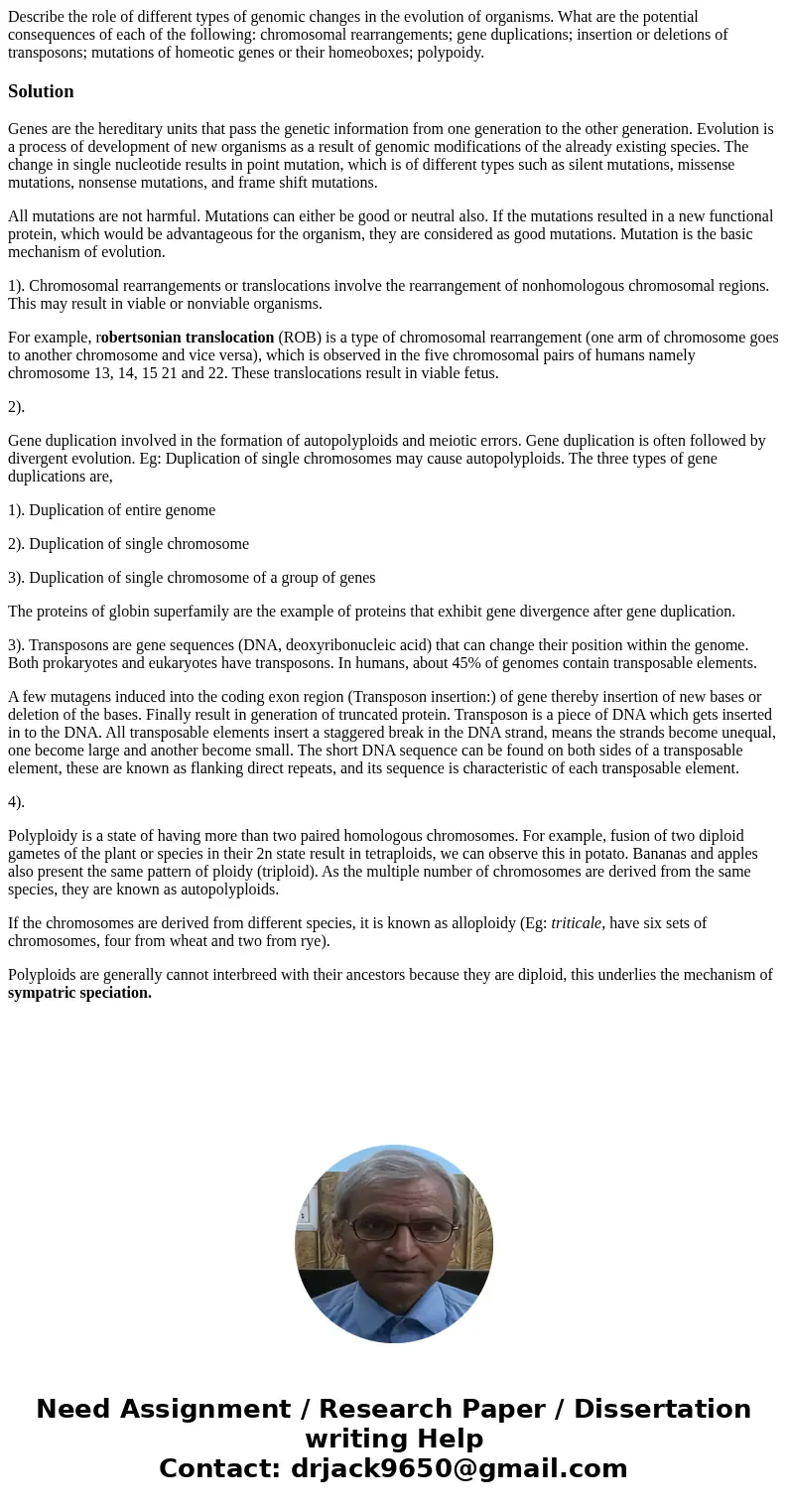Describe the role of different types of genomic changes in t
Solution
Genes are the hereditary units that pass the genetic information from one generation to the other generation. Evolution is a process of development of new organisms as a result of genomic modifications of the already existing species. The change in single nucleotide results in point mutation, which is of different types such as silent mutations, missense mutations, nonsense mutations, and frame shift mutations.
All mutations are not harmful. Mutations can either be good or neutral also. If the mutations resulted in a new functional protein, which would be advantageous for the organism, they are considered as good mutations. Mutation is the basic mechanism of evolution.
1). Chromosomal rearrangements or translocations involve the rearrangement of nonhomologous chromosomal regions. This may result in viable or nonviable organisms.
For example, robertsonian translocation (ROB) is a type of chromosomal rearrangement (one arm of chromosome goes to another chromosome and vice versa), which is observed in the five chromosomal pairs of humans namely chromosome 13, 14, 15 21 and 22. These translocations result in viable fetus.
2).
Gene duplication involved in the formation of autopolyploids and meiotic errors. Gene duplication is often followed by divergent evolution. Eg: Duplication of single chromosomes may cause autopolyploids. The three types of gene duplications are,
1). Duplication of entire genome
2). Duplication of single chromosome
3). Duplication of single chromosome of a group of genes
The proteins of globin superfamily are the example of proteins that exhibit gene divergence after gene duplication.
3). Transposons are gene sequences (DNA, deoxyribonucleic acid) that can change their position within the genome. Both prokaryotes and eukaryotes have transposons. In humans, about 45% of genomes contain transposable elements.
A few mutagens induced into the coding exon region (Transposon insertion:) of gene thereby insertion of new bases or deletion of the bases. Finally result in generation of truncated protein. Transposon is a piece of DNA which gets inserted in to the DNA. All transposable elements insert a staggered break in the DNA strand, means the strands become unequal, one become large and another become small. The short DNA sequence can be found on both sides of a transposable element, these are known as flanking direct repeats, and its sequence is characteristic of each transposable element.
4).
Polyploidy is a state of having more than two paired homologous chromosomes. For example, fusion of two diploid gametes of the plant or species in their 2n state result in tetraploids, we can observe this in potato. Bananas and apples also present the same pattern of ploidy (triploid). As the multiple number of chromosomes are derived from the same species, they are known as autopolyploids.
If the chromosomes are derived from different species, it is known as alloploidy (Eg: triticale, have six sets of chromosomes, four from wheat and two from rye).
Polyploids are generally cannot interbreed with their ancestors because they are diploid, this underlies the mechanism of sympatric speciation.

 Homework Sourse
Homework Sourse